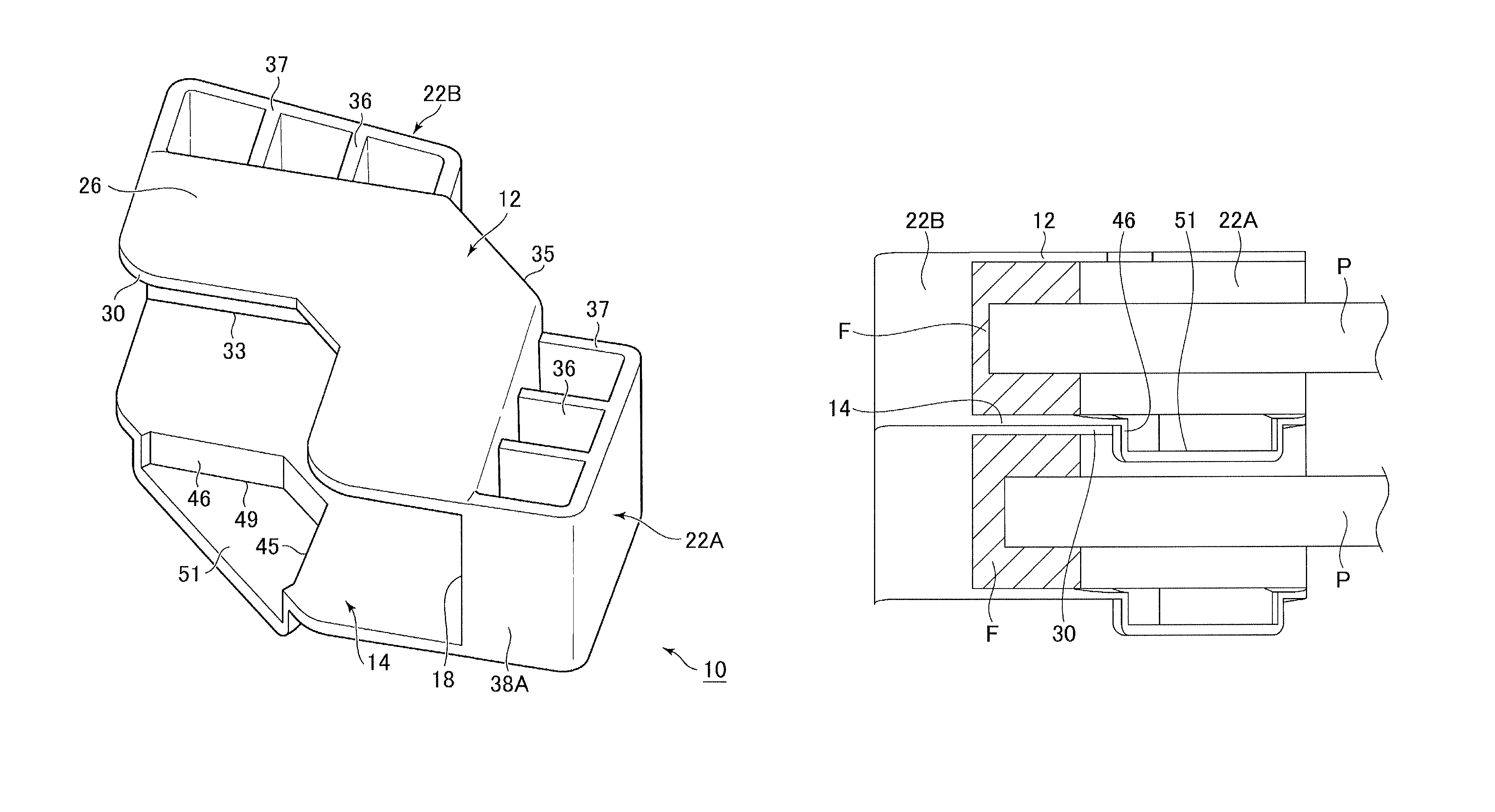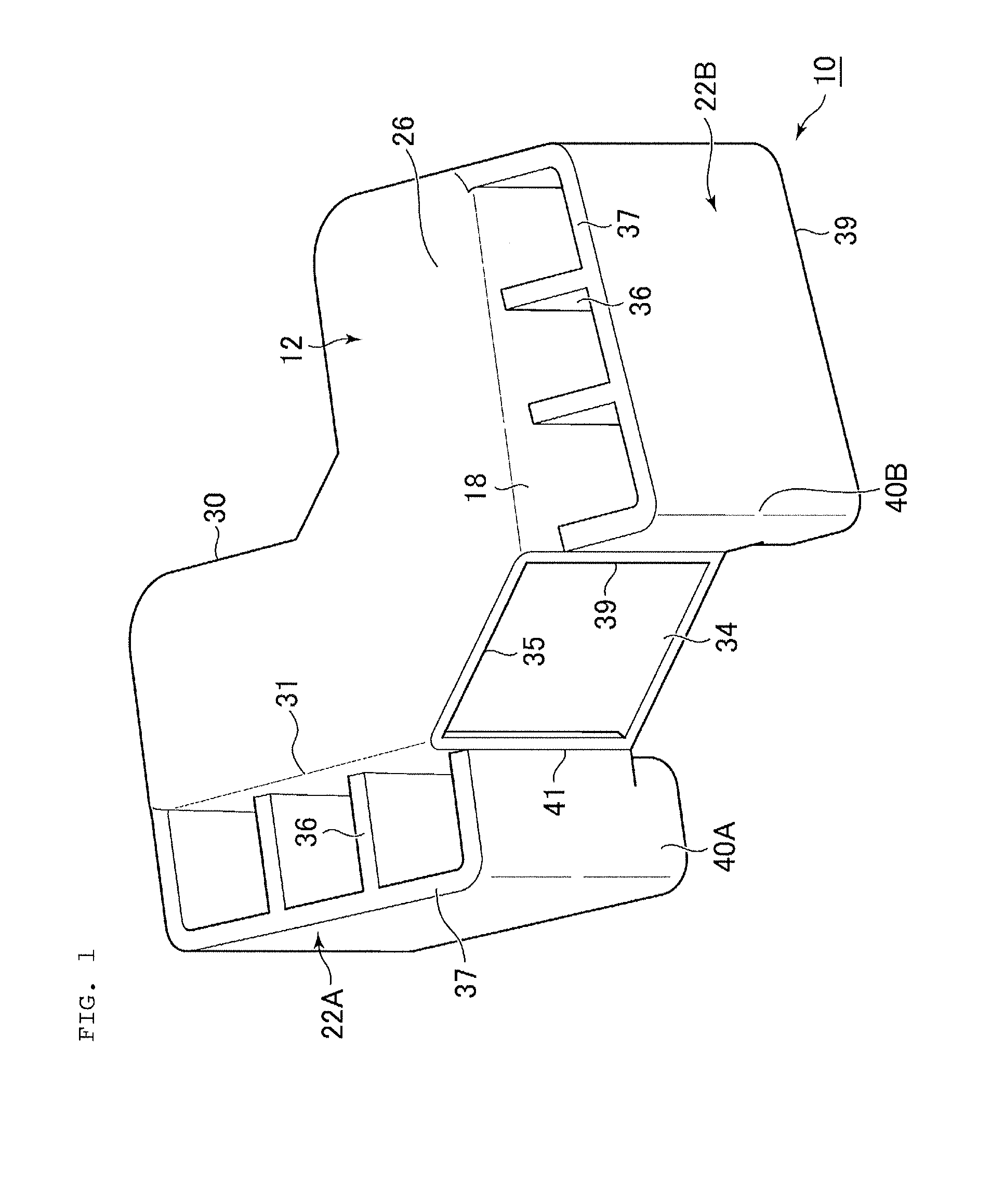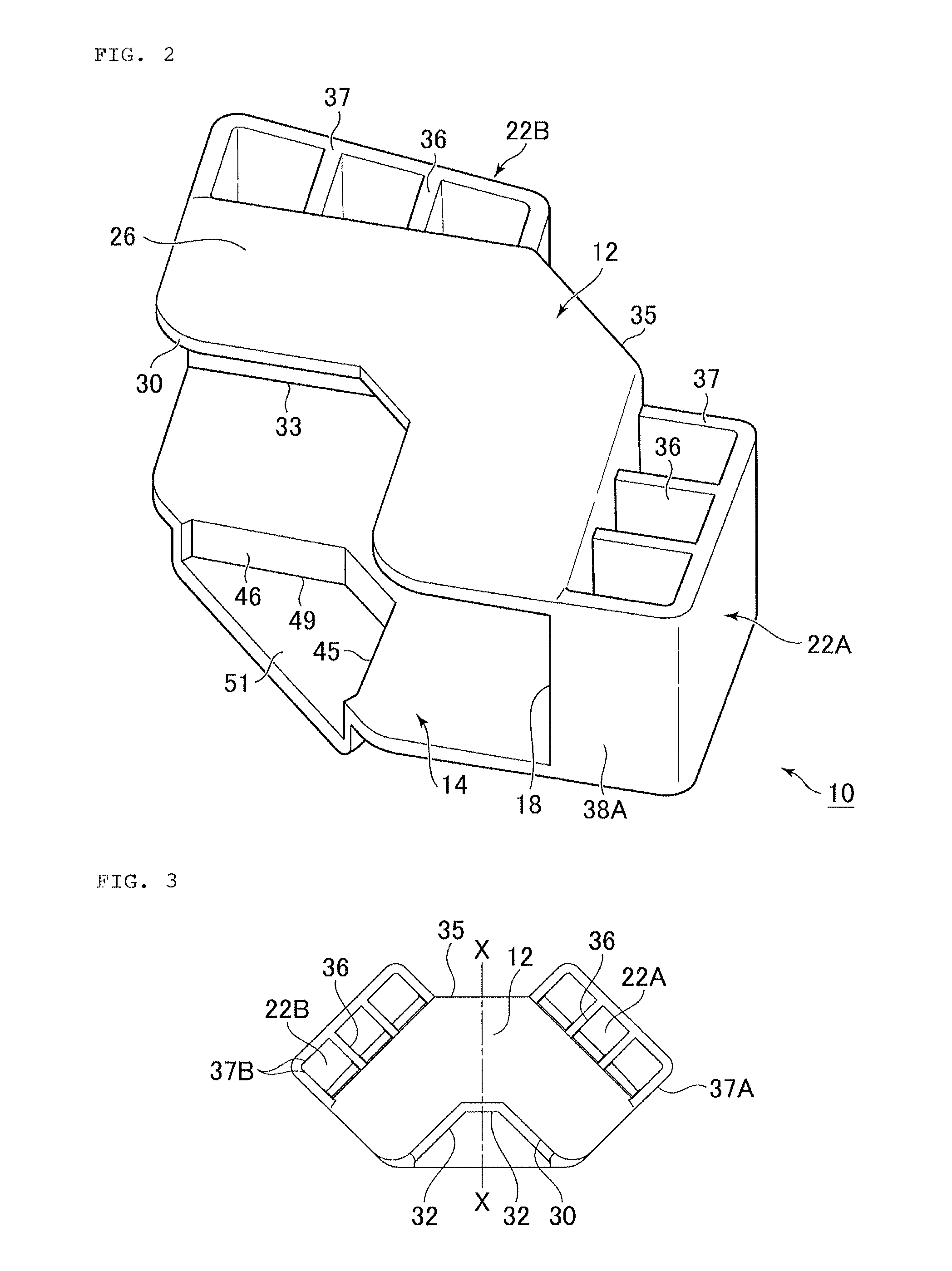Module used for stacking thin plate panels
a technology of modules and thin plates, applied in the direction of machine supports, transportation and packaging, packaging goods types, etc., can solve the problems of difficult to stably stack a difficult to ensure the load transmitting area on the upper portion, and difficult to stably stack the plurality of thin panels in the vertical direction. stably stored or conveyed efficient and stably stacked
- Summary
- Abstract
- Description
- Claims
- Application Information
AI Technical Summary
Benefits of technology
Problems solved by technology
Method used
Image
Examples
fourth embodiment
[0066]A fourth embodiment of the present invention will be described in detail below. In the following description, like reference numerals designate elements corresponding or identical to those in the first embodiment, and such elements will not be further elaborated here. A description will be given on features of this embodiment in detail.
[0067]A module 10 according to this embodiment has following features. A thin panel P without a frame body is a target of this embodiment. The module 10 according to this embodiment is a modification of the module according to the first embodiment. Specifically, a middle plate-shaped body 202 is disposed between the upper plate-shaped body 12 and the lower plate-shaped body 14, and longitudinal ribs 204 are disposed to extend between the upper plate-shaped body 12 and the middle plate-shaped body 202. As illustrated in FIG. 12 and FIG. 13, the middle plate-shaped body 202 cooperates with the lower plate-shaped body 14 to sandwich the thin panel ...
PUM
 Login to View More
Login to View More Abstract
Description
Claims
Application Information
 Login to View More
Login to View More - R&D
- Intellectual Property
- Life Sciences
- Materials
- Tech Scout
- Unparalleled Data Quality
- Higher Quality Content
- 60% Fewer Hallucinations
Browse by: Latest US Patents, China's latest patents, Technical Efficacy Thesaurus, Application Domain, Technology Topic, Popular Technical Reports.
© 2025 PatSnap. All rights reserved.Legal|Privacy policy|Modern Slavery Act Transparency Statement|Sitemap|About US| Contact US: help@patsnap.com



